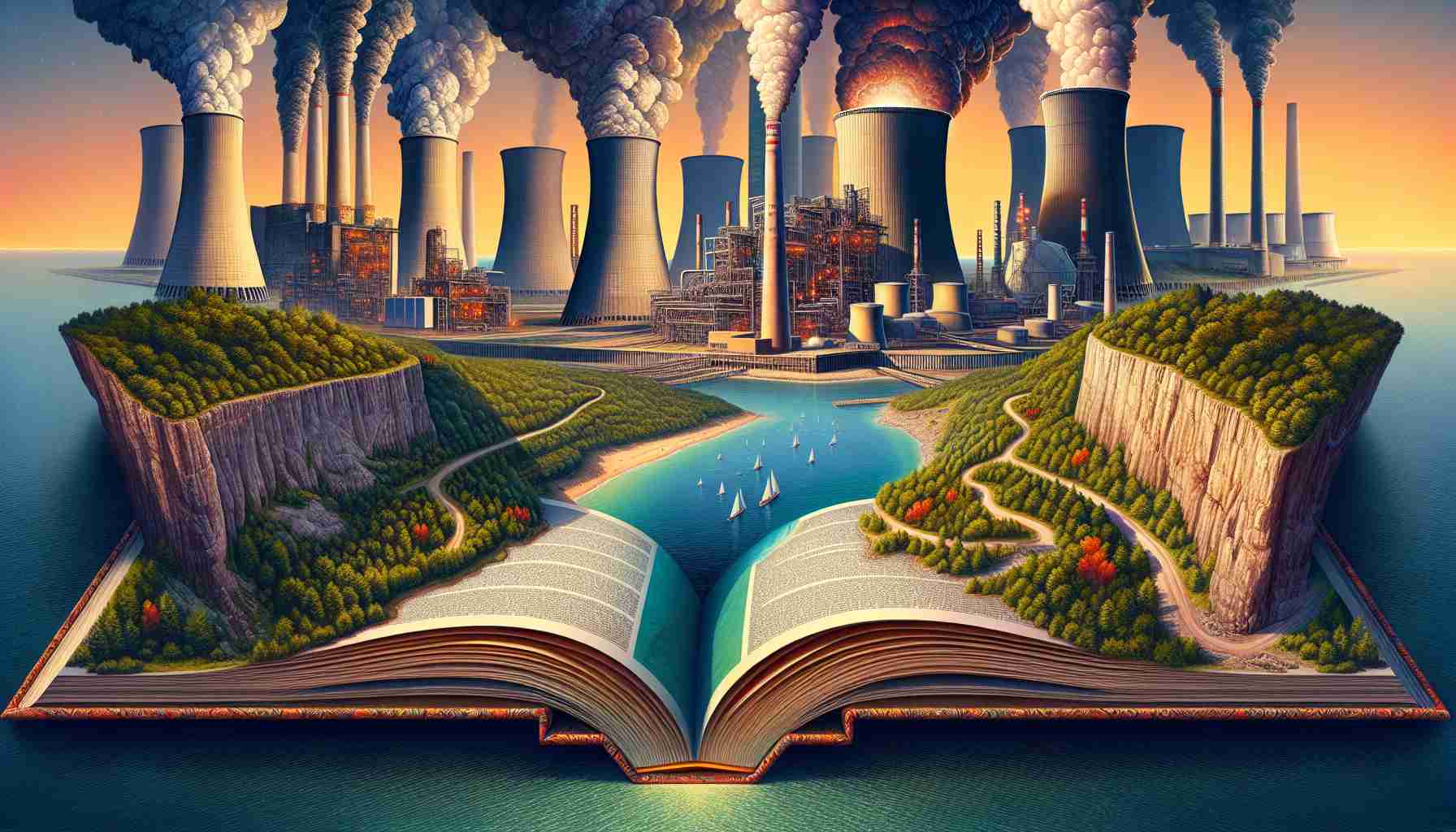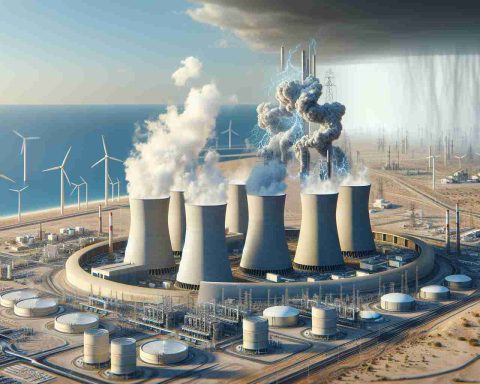- The Great Lakes region is experiencing a shift from coal dependency to potential nuclear energy solutions.
- Indiana is considering repurposing former coal sites for small modular reactors (SMRs), despite having no existing nuclear facilities.
- President Trump’s influence looms over Michigan’s automotive sector, with implications for electric vehicle mandates.
- The reopening of Michigan’s Palisades nuclear plant is a contentious topic, sparking public debate.
- Environmental concerns are escalating over Enbridge’s Line 5 project, with calls for extensive evaluations by local tribes and activists.
- As nuclear debates gain ground in Minnesota, the region’s energy future reflects broader global trends towards sustainable solutions.
The energy landscape around the Great Lakes is a dramatic stage for change, showcasing a fierce clash between coal’s past and nuclear’s potential future. With President Trump’s return, all eyes are on his promise to dismantle electric vehicle (EV) mandates, casting uncertainty over Michigan’s struggling automotive sector. As electricity demand climbs, coal plants in Indiana and Illinois are delaying retirements, clinging to their economic viability, while Ohio holds tight to its coal facilities.
Amidst this coal-centric narrative, Indiana is exploring a leap into the nuclear age, eyeing eight former coal sites as potential hosts for small modular reactors (SMRs). Though currently lacking nuclear facilities, Indiana’s ambitions highlight the broader push for energy diversification across the region. Meanwhile, in Michigan, debates heat up over quickly reopening the Palisades nuclear plant, stirring public concern.
In Minnesota, legislators are probing the nuclear option, sparking a potential revival of atomic energy debates. Environmental tensions rise over Enbridge’s Line 5 project, with tribes and activists in Michigan and Wisconsin demanding rigorous environmental evaluations, reflecting the region’s increasing focus on sustainability.
The Great Lakes energy saga is more than a local struggle; it’s a reflection of global energy trends. The continued reliance on coal threatens environmental and health repercussions, even as nuclear discussions hint at a safer, cleaner future. With energy policies in flux, the region’s push for a sustainable and secure energy mix remains critical.
Takeaway: The Great Lakes energy saga underscores the tension between traditional coal power and the drive for nuclear innovation, symbolizing a global shift towards cleaner energy solutions—a storyline that’s reshaping how we think about energy resilience and environmental responsibility. Stay tuned as this narrative unfolds, impacting jobs, economies, and environmental stewardship across the region.
Nuclear Ambitions and Coal’s Last Stand: A Fight for the Future of Energy in the Great Lakes
Pros and Cons: Coal vs. Nuclear Energy in the Great Lakes
The Great Lakes region’s energy future is sharply poised between the enduring past of coal and the untapped potential of nuclear power, with small modular reactors (SMRs) making waves as possible game-changers. Below are some crucial pros and cons to consider:
Coal Energy:
– Pros:
– Economic Viability: Coal plants support local economies through jobs and tax revenues.
– Infrastructure Stability: The region boasts existing infrastructure and technical know-how for coal.
– Cons:
– Environmental Impact: High emissions contribute to pollution and climate change.
– Health Risks: Associated with respiratory problems and other health issues.
Nuclear Energy:
– Pros:
– Clean Energy Source: Minimal emissions make it environmentally friendly.
– Reliability: Provides a stable and continuous power supply.
– Cons:
– High Initial Costs: Installation and regulatory approval for nuclear facilities are expensive and lengthy.
– Public Concerns: Safety and waste disposal issues remain a major public concern.
Predictive Insights: The Nuclear Energy Landscape in the Great Lakes
Increased interest in nuclear energy, particularly SMRs, positions the Great Lakes as a potential hub for this sustainable power source. Experts predict that the integration of SMRs could significantly reduce emissions and stimulate local economies by creating high-tech jobs and advancing skills. However, regulatory hurdles and public apprehension about safety may slow down adoption.
Market Analysis: Energy Transition Trends
The energy sector in the Great Lakes is undergoing notable transformations as states contemplate various future avenues:
– Indiana’s Initiative: As Indiana evaluates converting old coal sites into SMR locations, investors and policymakers alike are keenly observing potential market shifts.
– Minnesota’s Debate: Legislative discussions on nuclear energy revival indicate a possible surge in investments if community consensus is achieved.
– Michigan’s Dilemma: The reopening of the Palisades plant could ignite regional discourse on nuclear safety versus energy needs.
Key Questions and Answers:
1. What is the status of coal plant retirements in the Great Lakes region?
Coal plant retirements are currently delayed in states like Indiana and Illinois due to economic dependency and infrastructure investments. Ohio, in particular, remains firmly committed to maintaining its coal plants.
2. How are small modular reactors (SMRs) changing nuclear energy prospects in the Great Lakes?
SMRs, with their smaller size and potentially lower costs, are transforming the nuclear discourse in the region, allowing for nuclear consideration even in previously non-nuclear states like Indiana and Minnesota.
3. What are the environmental implications of leaning on nuclear over coal in the Great Lakes?
Shifting towards nuclear energy from coal is expected to significantly cut carbon emissions and pollutant outputs, aligning with global sustainability goals. However, nuclear waste management and long-term ecological effects remain critical challenges.
Explore more about these pressing energy topics in the Great Lakes region by visiting related resources such as the main page of U.S. Nuclear Energy Institute and U.S. Energy Information Administration, offering a wealth of information on energy forecasts, regulatory updates, and market trends.
The source of the article is from the blog trebujena.net















